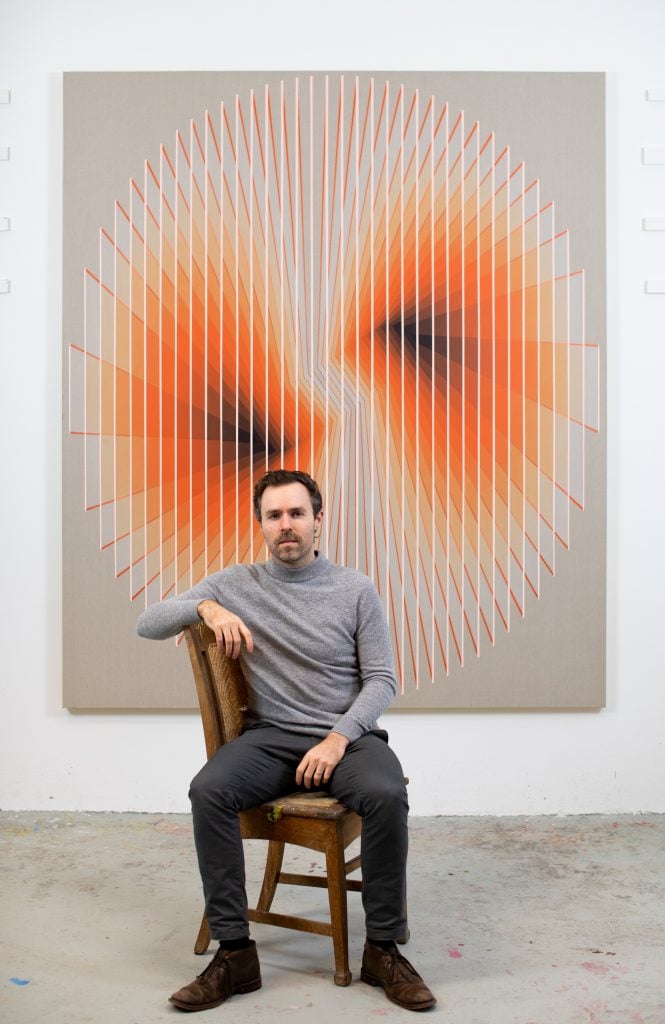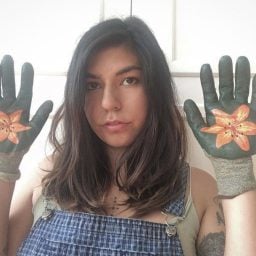Every month, hundreds of galleries add newly available works by thousands of artists to the Artnet Gallery Network—and every week, we shine a spotlight on one artist you should know. Check out what we have in store, and inquire for more with one simple click.
About the Artist: Scottish artist Daniel Mullen creates optically dazzling works using a process that includes the application of thin, translucent layers of paint on exposed linen. For Mullen, his technique is central to his concept. Incredibly precise and angular, these hard-edged geometric works are achieved through an exacting and time-consuming process of measuring and taping his canvases. The artist, who has described himself as an impatient person, uses painting as a meditative process of repetitive movement and rhythm, with the brush working as an extension of his person. Mullen shows with Elan Fine Art in Vancouver, B.C., and is currently working on “Future Monuments,” a series that attempts to assign visual corollaries to the amorphous experiences of sound, movement, light, and shadow.
Why We Like the Work: Mullen’s meticulous visions often depict panes of glass arranged in precise forms. Other times, the images are more of a whirlwind, looking as though the planar forms of an architectural blueprint were swirled about in a gust of wind. All the works embrace an exactitude of line and angle, appearing impeccable from a distance. Up close, however, small vacillations and shifts in brushstrokes reveal evidence of the artist’s hand. Such details gesture to the link between the artist’s body and its output in a refreshingly intimate way. Rather than belonging to an austere, hard-edged aesthetic, Mullen sees his works as rooted in a spiritualized abstraction and the visual idioms of Hilma af Klint, Josef Albers, Bridget Riley, and Swiss artist Emma Kunz, in particular.
According to the Artist: “The visual language originates from my formative education at a Rudolf Steiner school, where I learned the technique of veil painting, which uses heavily diluted paint applied in rhythmical overlapping layers. In Steiner’s pedagogy, it is believed that this way of painting creates an atmosphere in which color fields can permeate beyond the support surface. I utilize this technique as a way to create an ethereal effect…I would visually place my work somewhere between geometric abstraction and the Light and Space movement of California. I’m interested in phenomenology—to sense something that is not present, or at least that which seems undefinable, a space out of reach beyond our perception,” wrote Mullen.
Browse works by the artist below.
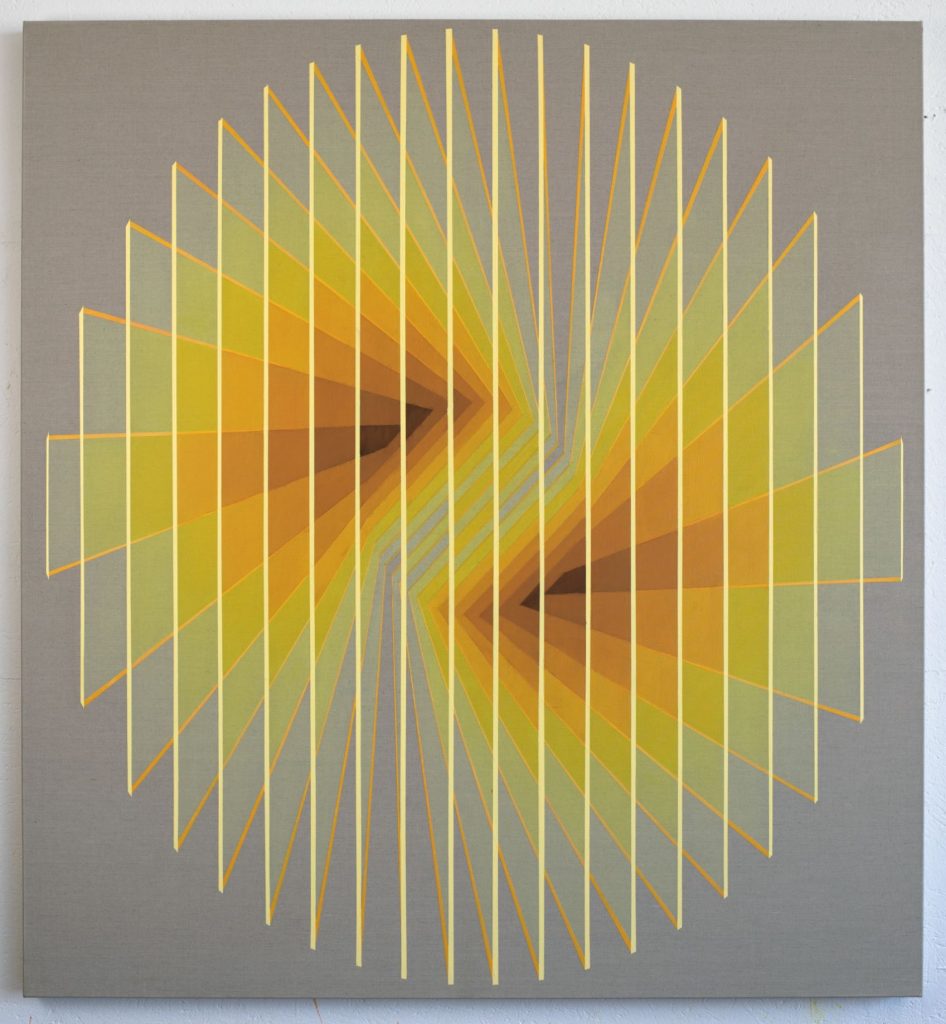
Daniel Mullen, Vortex No. 1 (2021). Courtesy of Elan Fine Art.
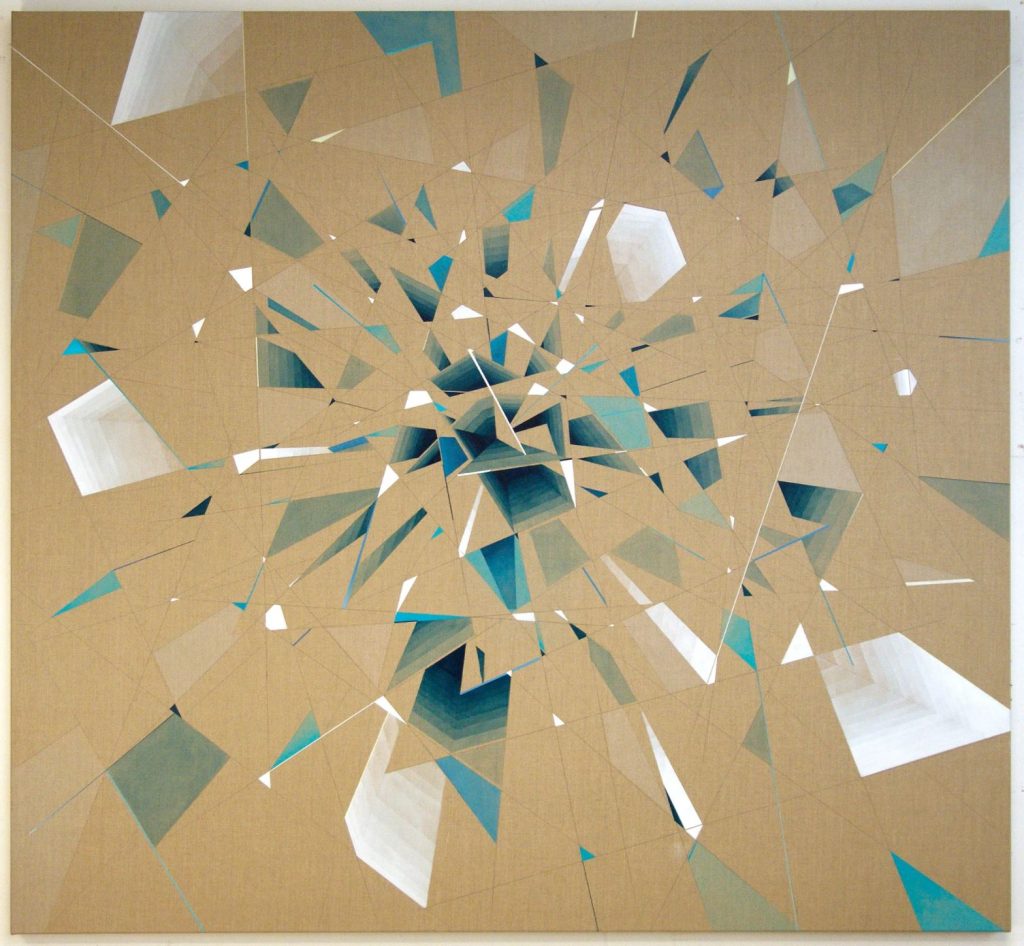
Daniel Mullen, Retroactive (2015). Courtesy of Elan Fine Art.
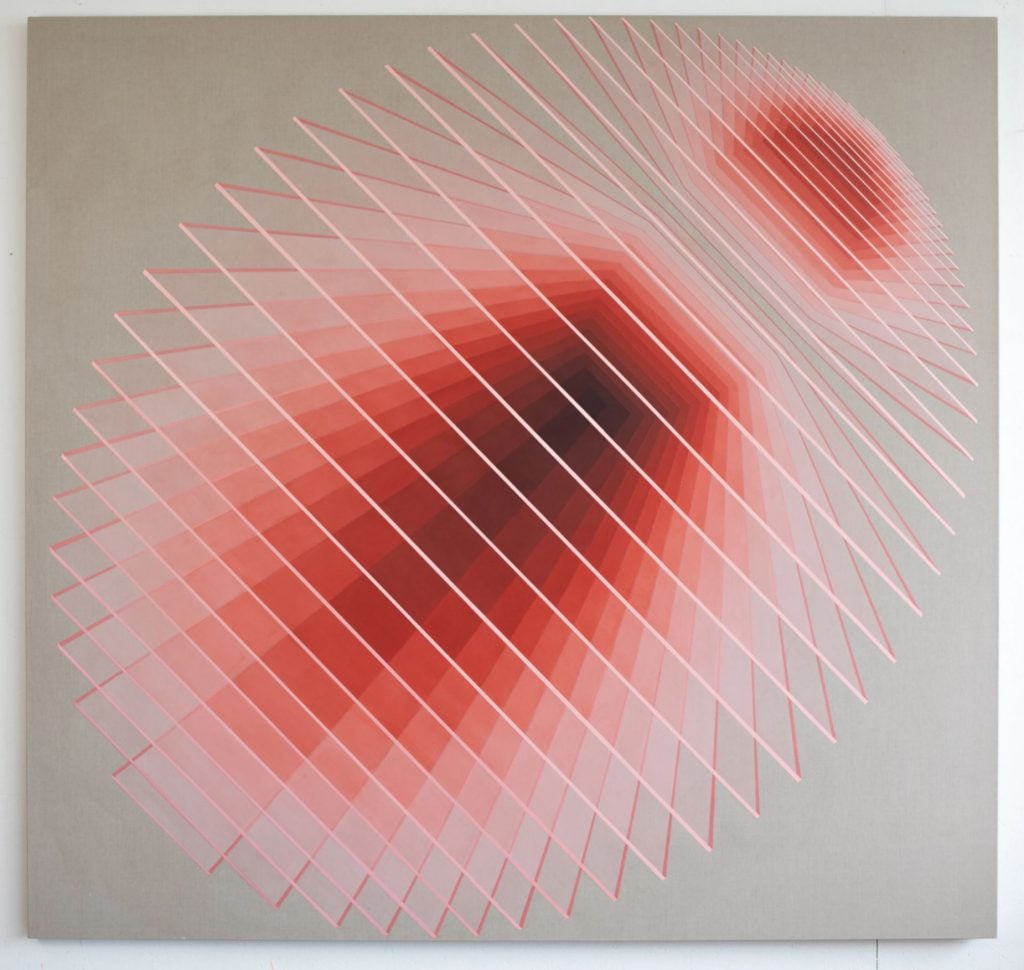
Daniel Mullen, Slouching Towards No. 3 (2021). Courtesy of Elan Fine Art.

Daniel Mullen, Slouching Towards No 2 (2021). Courtesy of Elan Fine Art.
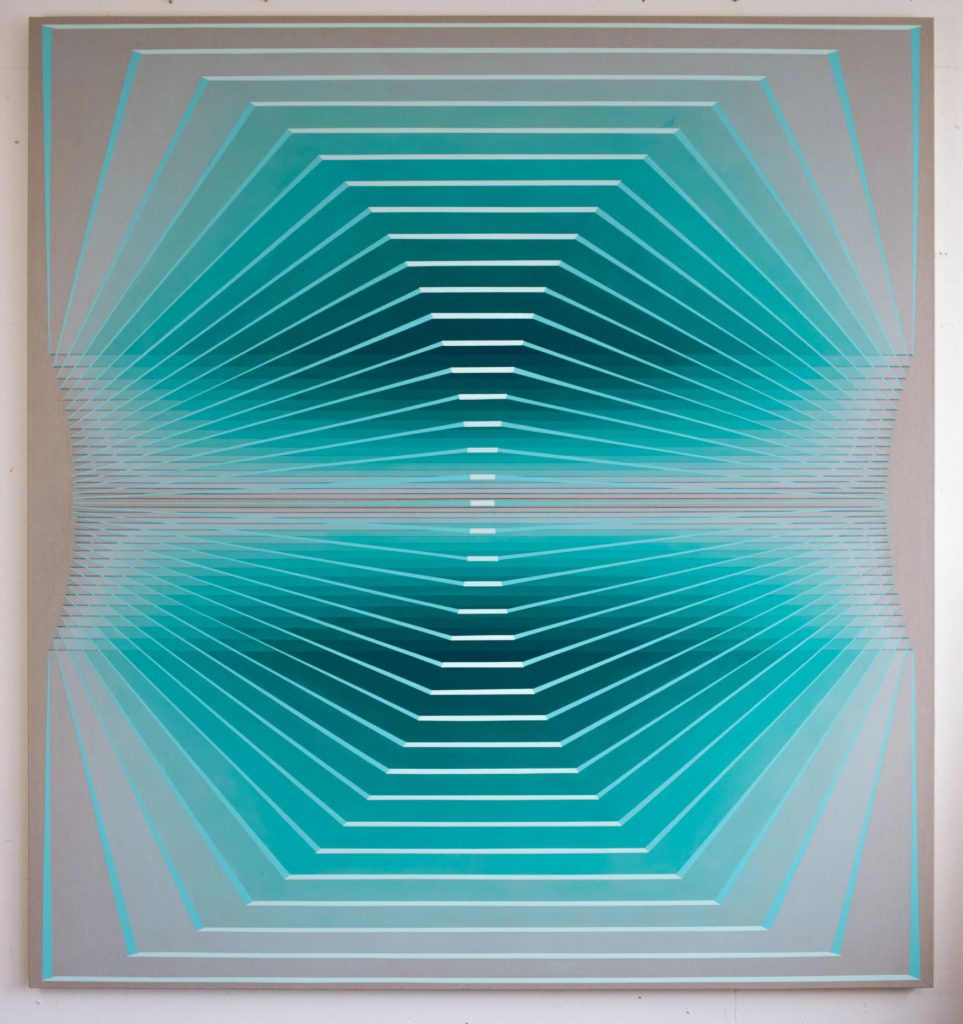
Daniel Mullen, Lemnos No.3 (2021). Courtesy of Elan Fine Art.
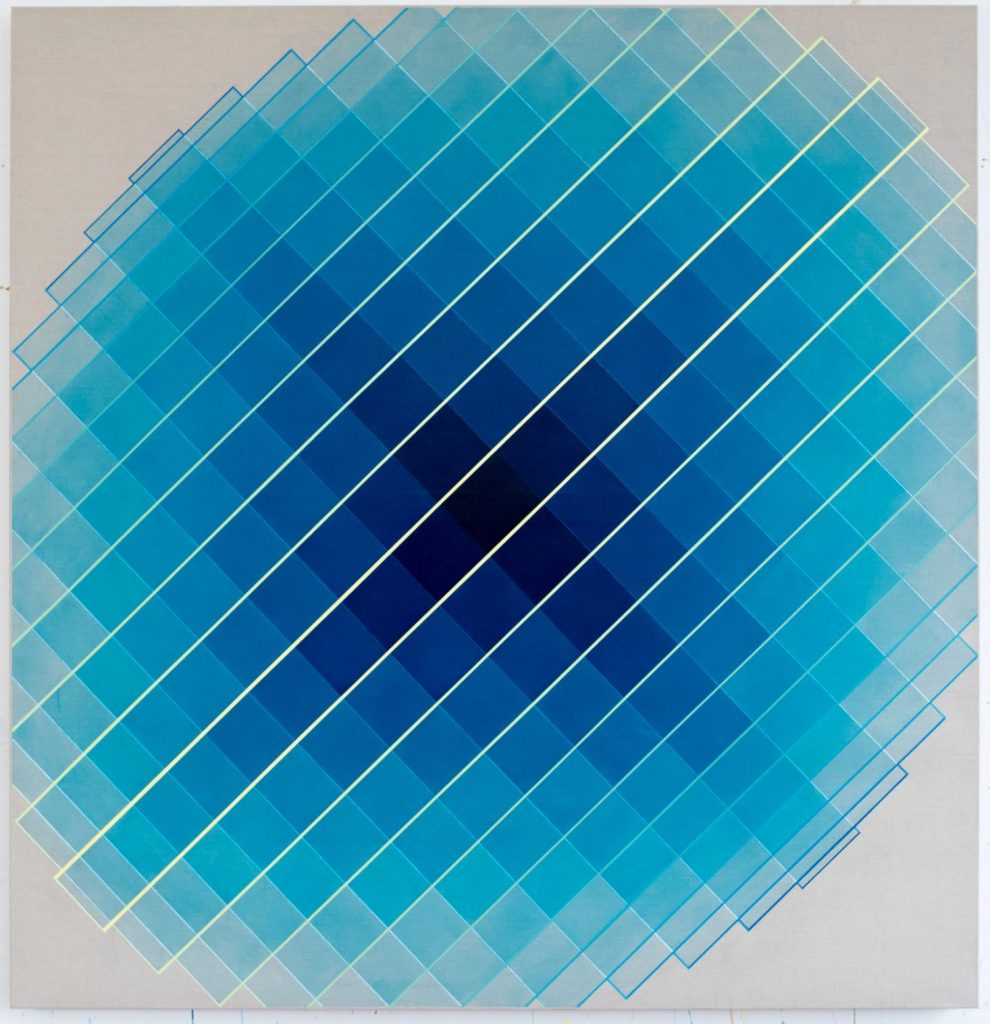
Daniel Mullen, Circling the Form (2020). Courtesy of Elan Fine Art.
